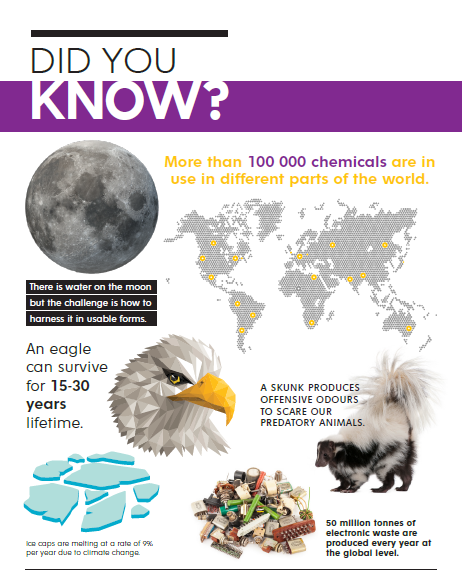The African continent remains at cross roads. It is the most vulnerable to climate change and climate variability. The incentive is strong for African countries to join global efforts to reduce greenhouse emissions while also increasing its adaptive capacity. In the same vein, African countries have committed to industrialising their economies to meet the challenges of poverty, growing populations and unemployment. If Africa is to realise these, using the same road to economic development that developed countries took, it would be disastrous to the environment. Globally, countries have been setting out plans to reduce greenhouse gas (GHG) emissions by the middle of the century so as to limit the increase in global average temperatures. The increase in global temperatures is being noted as a cause of concern as it increase the chances of extreme weather events occurring, rising of sea levels which lead to hunger and migration. Unrestrained growth of emissions in Africa gets in the way of economic development, and would pose economic impacts which include export linked penalties and reduced financing. In this article, the continent`s manufacturing trajectories as well as potential reduction approaches for the long term are explored.
At a global level, the manufacturing industry has been regarded as a major GHG emission contributor based on its power demand. It is very important to take note of this in pushing to realise the 1.5 °C pathway. Though Africa’s contribution through manufacturing is negligible, it will inevitably increase as the continent industrialises its economy. According to the 2020 World Bank data, Africa’s manufacturing sector presently emits around 440 megatons of carbon dioxide, which is around 30 to 40 percent of total African emissions. If this growth trajectory continues in the absence of any decarbonisation efforts, emissions could double to about 850 megatons by 2050. This would be a major setback to the global efforts of emission reduction. More importantly it would also put Africa at an economic disadvantage. Africa would run a risk that it might not be able to export to international markets and with many countries passing environmental legislation and implementing taxes on GHG emissions of imported goods, there is a risk of a dire situation for Africa to rely more on international development, if no action is taken.
Robust efforts to decarbonise the manufacturing and power sectors will have fundamental implications for the African continent which can enable the manufacturing sector in Africa to grow and create clean jobs, while remaining globally competitive. In reality, to achieve this a lot of funds are needed. Estimates by African Development Bank show that approximately US$2 trillion is required in additional investment in manufacturing and power industries in the next 30 years. Around US$600 billion would also be required to decarbonise the current industries operating, to turn them into green facilities. The rest of the US$1.4 bullion would be needed to assist in the creation of new, low emitting businesses which would replace or supplement high emitting legacy sectors. Michael Turner, Director of Actis, a leading market investor stated that, “As African economies industrialize and energy demand increases, the availability of affordable green energy will be vital. Without green power, it will not be possible to realize Africa’s green manufacturing potential.” It is important to note that millions of jobs can be created from decarbonisation led growth, despite having about 2 million jobs being lost from legacy industries as consumers make the switch to greener options. Predictions are being made that about 6 million new jobs could be created in the new green businesses by 2050, mainly in cross laminated timber and electric vehicle charging infrastructure and with strong performances in the solar and wind industries.
Already there are many promising sectors which are being explored in the continent. In the renewable energy sector, there are some good examples of excellent work being done. In Nigeria, a country which is not exactly abundant in solar and wind, Auxano is running its own solar photovoltaic manufacturing company, alongside Nayo Tropical Technology which has been operating in Nigeria as well, providing solar invertor solutions and manufacturing solar panels and other important components for solar home systems and mini grid systems. There are real prospects for a scale up and growth throughout the continent. A good example is the East African electric motor cycle start-up, Ammpersand, which is a leading electric vehicle operation in the region. It leases or sells purpose-built electric two-wheelers to motorcycle taxi drivers, assembles all motorcycles and batteries on site, helping to ensure that the next generation of African developers and engineers are being nurtured in Africa.
The road towards net zero emissions for Africa is not an easy one but the risks of not realising this goal, do outweigh the sacrifices and costs that would have been made to get there. The need for action has never been greater, as the window for containing global warming below 1.5° continues to narrow. In many sectors green technology and production processes are available, with additional low carbon technologies developed and should reach economic viability and maturity by 2030 and this should close the gap to decarbonisation by 2050. At the same time businesses and investors have an opportunity to quickly seize on green manufacturing opportunities. At this important juncture as African countries grapple with the fallout from COVID 19, there is an opportunity to step back and reimagine Africa`s growth on a more sustainable path. Considering that Africa`s manufacturing sector remains negligible, there is an opportunity to build its innovation, greener jobs and technologies which are geared towards a suitable development which has remained elusive for Africa.



